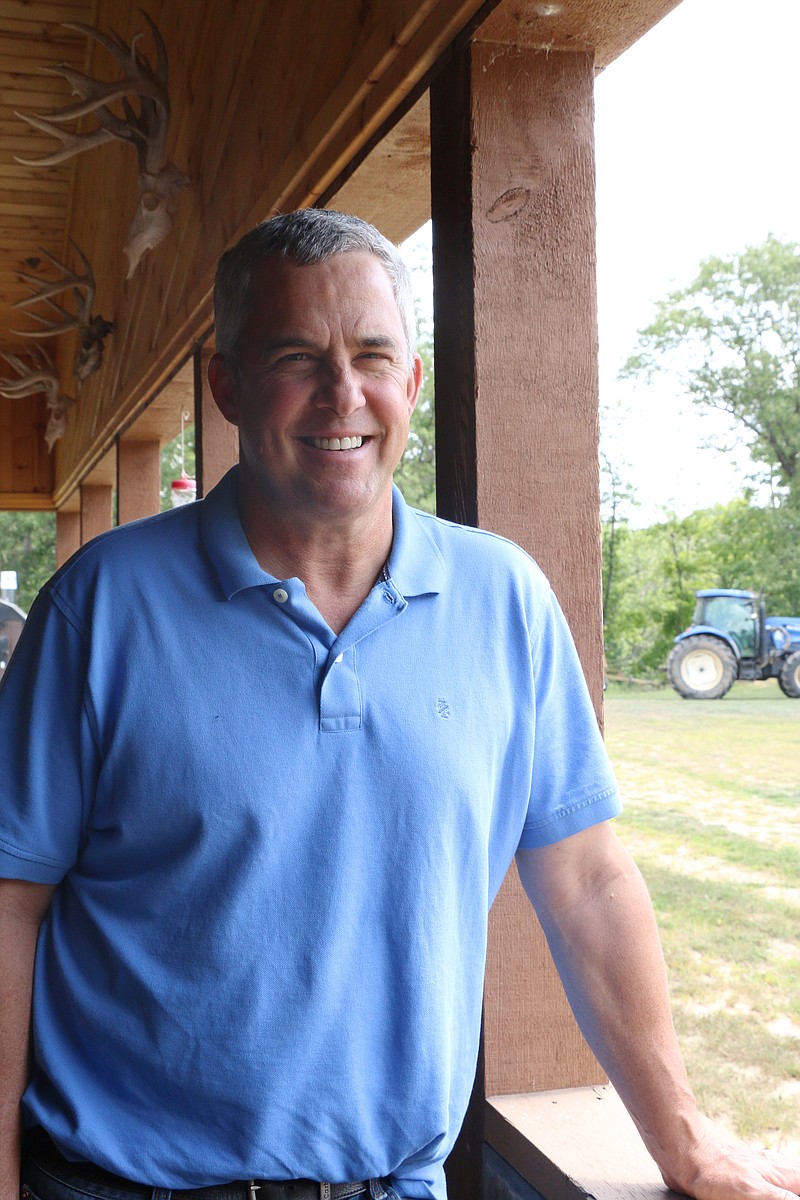The Missouri Conservation Commission is asking for public feedback on proposed regulations to the operations of hunting preserves in the state.
Aaron Jeffries, Missouri Department of Conversation (MDC) upland game coordinator, said the purpose of the proposed regulations is to decrease the risk of disease among Missouri's deer. Chronic Wasting Disease (CWD) was found in Macon County in 2010.
"Our biggest challenge is we don't want this (CWD) to pop up anywhere else in the state and we surely don't want to have another disease such as TB or brucellosis get into our important cattle industry in the state, and other states have experienced that," Jeffries said. "The whole goal is to minimize risk associated with moving animals. That's the goal behind those proposed regulations."
Chronic Wasting Disease has not been shown or scientifically proven to jump between species of animals, Jeffries said. But, TB and brucellosis have.
If adopted, the proposed regulations would require hunting preserves to raise the height of fencing from 8 feet to 10 feet, require all deer 6 months or older that die in captive facilities to be tested for CWD and prohibit new hunting facilities within 25 miles of where CWD has been found in deer. The proposed regulations would also ban the importation of live white-tail deer from other states.
There are 220 individuals raising captive deer in Missouri. Those deer are then taken to one of the state's 40 hunting preserves or shooting pins. Callaway County has three breeding facilities and two hunting preserves. One of those two Callaway hunting ranches is Whitetail Dreams, located on State Highway AD in Fulton.
Sam James, Whitetail Dreams manager and president of the Missouri Deer Association, described the deer breeding and hunting industry as a growing industry. James said the proposed regulations are the MDC's attempt to negatively impact the industry in the state. Jeffries said that is not the intention of the Commission.
"Our goal is to protect our state's deer herd whether they're inside or outside the fence. That's ultimately our goal," Jeffries said.
The current permits and regulations surrounding transferring deer from private deer owners out of state into Missouri require vets to ensure deer are healthy before allowing them to be transported. James said he feels the current regulations and permits required to import deer from out of state are enough. He said banning importation and closing the borders could be harmful to the industry.
Jeffries said more than 20 states have closed their borders to the importation of live captive deer due to disease concerns. He said when CWD was discovered in Missouri in 2010, the conservation department made changes to regulations on free-ranging deer in Missouri.
Now, Jeffries said, MDC wants to make changes to captive-herd regulations. The department of conservation and the Missouri Department of Agriculture currently both regulate the captive-deer industry in Missouri. The commission has been working on researching and drafting the regulations for a couple years.
Public comment is open on the Missouri Department of Conservation's website through Aug. 14. Jeffries said the commission has received several thousand comments up to this point. He said most have been supportive of the proposed regulations. After Aug. 14, the Missouri Conservation Commission will review public feedback then amend, approve or deny the proposal.
Jeffries said deer hunting is important to Missourians. There are more than half a million deer hunters in Missouri - more than 6,000 of those hunters are in Callaway County. There are an estimated 1.3 million white-tailed deer in the state. James has hunted since he was about 8 years old.
"I much prefer to eat what I harvest," James said. "And I like meat too much to be a vegetarian."
Industry looks to eliminate MDC's ability to regulate
Earlier this year, the Missouri Deer Association worked to create a house and senate bill that would reclassify captive deer from wildlife to livestock - eliminating the MDC's ability to regulate the industry. James said the Missouri Deer Association does not want to be free of regulations. He said the captive deer industry would prefer to be regulated by just the Department of Agriculture and not by both the Department of Agriculture and the MDC.
The conservation department disagrees that captive deer should be classified as livestock.
"We (The Conservation) feel a Whitetail deer, whether it's inside or outside the fence, is wildlife," Jeffries said.
James doesn't like word "livestock" but said by definition it is the term that makes the most sense when classifying captive deer. He said classifying the deer as livestock instead of wildlife makes sense for many reasons, one being that the deer live behind a fence and owners are responsible for medical care. James said Whitetail Dreams has to pay more than $15,000 a year on routine disease testing and vet bills.
The Missouri Deer Association introduced similar house and senate bills in 2013, but James said they didn't receive a lot of traction. They reintroduced the bills earlier this year. James said the bills were rolled into a larger agriculture bill.
Gov. Jay Nixon vetoed both bills - HB 1326 and SB 506 - in July. In his veto letter regarding HB 1326, Nixon wrote, "White-tailed deer are wildlife, and they are also a game animal. Putting them behind a fence does not change that fact."
James and the Missouri Deer Association have been working to spread the word about the house and senate bills with the hopes they can get enough votes when veto session starts in September.
Megan Favignano can be reached at (573) 826-2417 or [email protected].

